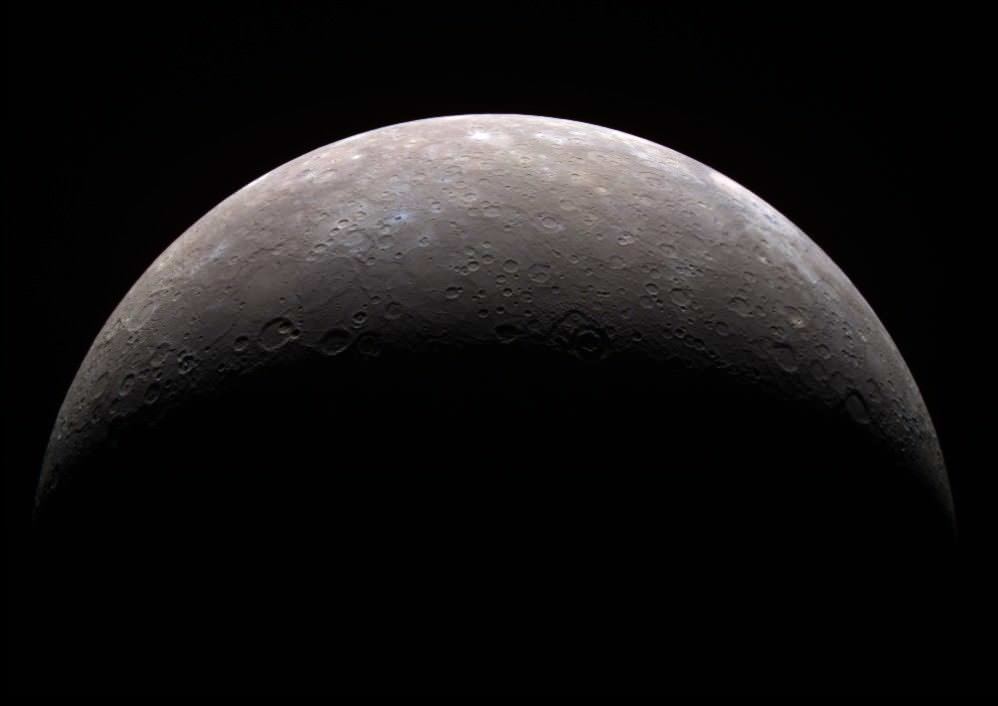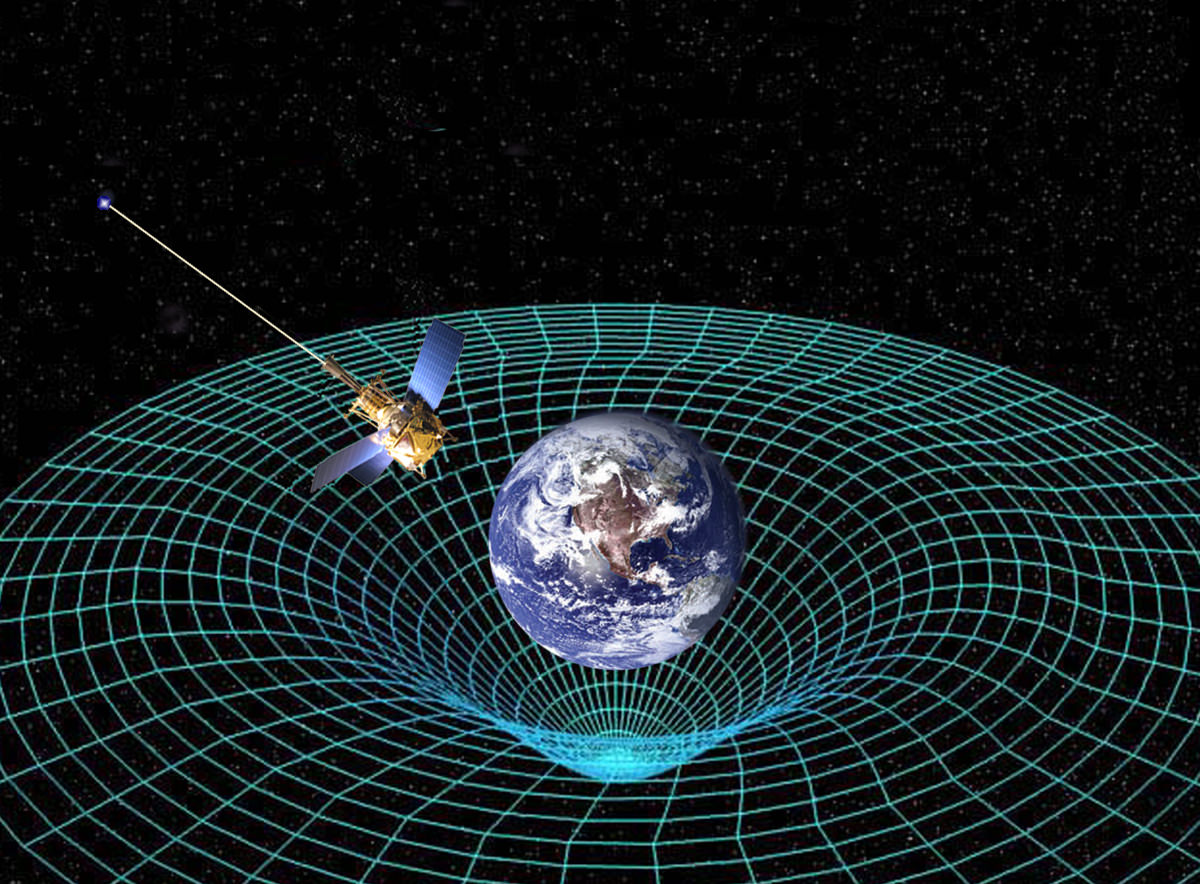What do Pamela and Fraser think will happen or be discovered in 2016? What would they like to see in the near future?
Continue reading “Astronomy Cast Ep. 401: Predictions for 2016 and Beyond”
What is the Higgs Boson?
What is this thing we keep hearing about – the Higgs Boson, and why is it important?
Continue reading “What is the Higgs Boson?”
How Many Moons Does Mercury Have?
Virtually every planet in the Solar System has moons. Earth has The Moon, Mars has Phobos and Deimos, and Jupiter and Saturn have 67 and 62 officially named moons, respectively. Heck, even the recently-demoted dwarf planet Pluto has five confirmed moons – Charon, Nix, Hydra, Kerberos and Styx. And even asteroids like 243 Ida may have satellites orbiting them (in this case, Dactyl). But what about Mercury?
If moons are such a common feature in the Solar System, why is it that Mercury has none? Yes, if one were to ask how many satellites the planet closest to our Sun has, that would be the short answer. But answering it more thoroughly requires that we examine the process through which other planets acquired their moons, and seeing how these apply (or fail to apply) to Mercury.
How Strong is Gravity on Other Planets?
Gravity is a fundamental force of physics, one which we Earthlings tend to take for granted. You can’t really blame us. Having evolved over the course of billions of years in Earth’s environment, we are used to living with the pull of a steady 1 g (or 9.8 m/s²). However, for those who have gone into space or set foot on the Moon, gravity is a very tenuous and precious thing.
Basically, gravity is dependent on mass, where all things – from stars, planets, and galaxies to light and sub-atomic particles – are attracted to one another. Depending on the size, mass and density of the object, the gravitational force it exerts varies. And when it comes to the planets of our Solar System, which vary in size and mass, the strength of gravity on their surfaces varies considerably.
What are Wormholes?
In science fiction, wormholes are a method often used to travel great distances across space. Are these magic bridges really possible?
With all my enthusiasm for humanity’s future in space, there’s one glaring problem. We’re soft meat bags of mostly water, and those other stars are really really far away. Even with the most optimistic spaceflight technologies we can imagine, we’re never going to reach another star in a human lifetime.
Reality tells us that even the most nearby stars are incomprehensibly far away, and would require vast amounts of energy or time to make the journey. Reality says that we’d need a ship that can somehow last for hundreds or thousands of years, while generation after generation of astronauts are born, live their lives and die in transit to another star.
Science fiction, on the other hand, woos us with its beguiling methods of advanced propulsion. Crank up the warp drive and watch the stars streak past us, making a journey to Alpha Centauri as quick as a pleasure cruise.
You know what’s even easier? A wormhole; a magical gateway that connects two points in space and time with one another. Just align the chevrons to dial in your destination, wait for the stargate to stabilize and then just walk… walk! to your destination half a galaxy away.
Yeah, that would be really nice. Someone should really get around to inventing these wormholes, ushering in a bold new future of intergalactic speedwalking. What are wormholes, exactly, and how soon until I get to use one?.
A wormhole, also known as an Einstein-Rosen bridge is a theoretical method of folding space and time so that you could connect two places in space together. You could then travel instantaneously from one place to another.
We’ll use that classic demonstration from the movie Interstellar, where you draw a line from two points, on a piece of paper and then fold the paper over and jab your pencil through to shorten the journey. That works great on paper, but is this actual physics?
As Einstein taught us, gravity isn’t a force that pulls matter like magnetism, it’s actually a warping of spacetime. The Moon thinks it’s just following a straight line through space, but it’s actually following the warped path created by the Earth’s gravity.
And so, according to Einstein and physicist Nathan Rosen, you could tangle up spacetime so tightly that two points share the same physical location. If you could then keep the whole thing stable, you could carefully separate the two regions of spacetime so they’re still the same location, but separated by whatever distance you like.
Climb down the gravitational well of one side of the wormhole, and then instantaneously appear at the other location. Millions or billions of light-years away. While wormholes are theoretically possible to create, they’re practically impossible from what we currently understand.

The first big problem is that wormholes aren’t traversable according to General Relativity. So keep this in mind; the physics that predicts these things, prohibits them from being used as a method of transportation. That’s a pretty serious strike against them.
Second, even if wormholes can be created, they’d be completely unstable, collapsing instantly after their formation. If you tried to walk into one end, you might as well be walking into a black hole.
Third, even if they are traversable, and can be kept stable, the moment any material tried to pass through – even photons of light – that would make them collapse.
There’s a glimmer of hope, though, because physicists still haven’t figured out how to unify gravity and quantum mechanics.
This means that the Universe itself might know things about wormholes that we don’t understand yet. It’s possible that they were created naturally as part of the Big Bang, when the spacetime of the entire Universe was tangled up in a singularity.
Astronomers have actually proposed searching for wormholes in space by looking for how their gravity distorts the light from stars behind them. None have turned up yet.
One possibility is that wormholes appear naturally like the virtual particles that we know exist. Except these would be incomprehensibly small, on the Planck scale. You’re going to need a smaller spacecraft.
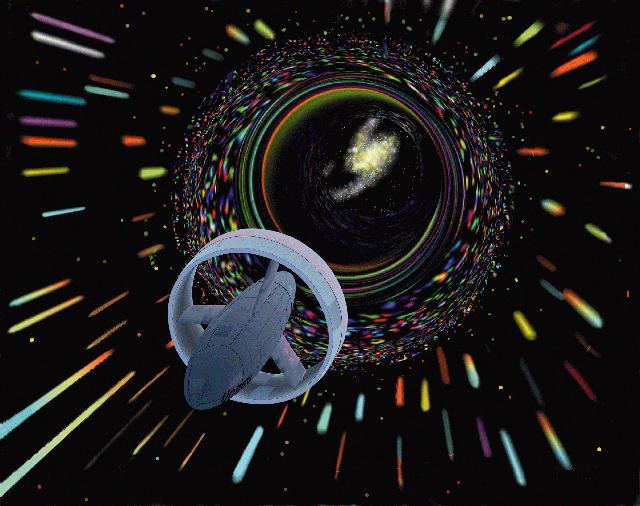
One of the most fascinating implications of wormholes is that they could allow you to actually travel in time.
Here’s how it works. First, create a wormhole in the lab. Then take one end of the wormhole, put it on a spacecraft and fly away at a significant percentage of the speed of light, so that time dilation takes effect.
For the people on the spacecraft, just a few years will have occurred, while it could have been hundreds or even thousands for the folks back on Earth. Assuming you could keep the wormhole stable, open and traversable, then traveling through it would be interesting.
If you passed in one direction, you’d not only move the distance between the wormholes, but you’d also be transported to the time that the wormhole is experiencing. Go one direction and you move forward in time, go the other way: backwards in time.
Some physicists, like Leonard Susskind think this wouldn’t work because this would violate two of physics most fundamental principles: local energy conservation and the energy-time uncertainty principle.
Unfortunately, it really seems like wormholes will need to remain in the realm of science fiction for the foreseeable future, and maybe forever. Even if it’s possible to create wormholes, then you’ve got the keep them stable and open, and then you’ve got to figure out how to allow matter into them without collapsing. Still, if we could figure it out, that’d make space travel very convenient indeed.
If you could set up two ends of a wormhole to anywhere in the Universe, where would they be? Tell us your ideas in the comments below.
What If We Dug a Tunnel Through the Earth?
If we could dig a tunnel through the Earth, what would happen? And is this even possible?
Continue reading “What If We Dug a Tunnel Through the Earth?”
Did We Need the Moon for Life?
Astronomers hate the Moon because it ruins perfectly good observing nights. But is it possible that we all need the Moon for our very existence?
For all we know, Earth is the only place in the Universe where life appeared. This makes the mystery of our existence even more puzzling. What were all the factors required to bring about the first lifeforms on our planet, and encourage the evolution of more complex, intelligent lifeforms.
We needed a calm and reasonable Sun, solid ground, nice temperatures, the appropriate chemicals, and liquid water. Possibly drinks served in pineapples with little umbrellas. But what about the Moon? Is the Moon a necessity for life in any way?
To the best of our knowledge, our Moon was formed when a Mars-sized object smashed into the Earth about 4.5 billion years ago. This enormous collision spun out a cloud of debris that coalesced into the Moon we know and love today.
Back then, the Moon was much closer to the Earth than it is today, a mere 20-30,000 kilometers. A fraction of its current distance. If you could have stood on the surface of the Earth, the Moon would have looked 10 to 20 times bigger than we see it today.
But nobody did, because the Earth was a molten ball of red hot magma, tasty lava through and through. Life emerged 3.8 billion years ago, pretty much the day after Earth had cooled down to the point that it was possible for life to form.
Scientists think that it first formed in the oceans, where there were adequate temperatures and abundant water as a solvent for life’s chemicals to mix.
The effect of gravity is a cube of its distance. When the Moon was closer, the power of its gravity to pull the Earth’s water around was more ferocious. But what impact has this gravity had on our world and its life? Do we need the Moon to make the magic happen?
Turns out, we might owe our very existence to it because its pull of gravity might have set our plate tectonics in motion. Without plate tectonics, our planet might be more like Venus, toasty and dead.
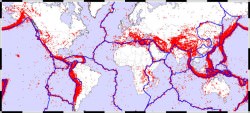
It raises the level of the world’s oceans towards the equator. Without this gravity, the oceans would redistribute, raising levels at the poles. It has also slowed Earth’s rotation on its axis. Shortly after its formation, the Earth turned once every 6 hours. Without that Moon to slow us down, we’d have much more severe weather.
It stabilizes the Earth’s rotation on its axis. It’s possible that the Earth might have rolled over on its axis on a regular basis, causing a complete redistribution of the Earth’s water. Astronomers think this happened on Mars, because it never had a large Moon to stabilize it.
But the biggest impact that the Moon has on life is through tides. That regular movement of water that exposes the land at the edge of the ocean, and then covers it again just a few hours later. This could have encouraged life to adapt and move from the oceans to land.
One of the most subtle effects from the Moon is what it has done to life itself. Nocturnal animals behave differently depending on where the Moon is in the sky during its 29.5-day cycle. When the Moon is full and bright, prey fish stay hidden in the reef, when they’d be most visible.

Amazingly, lions are less likely to hunt during the full Moon, and researchers have found that lion attacks on humans happen 10 days after the full Moon, and many bats will be less active during the full Moon.
With so many species on Earth affected by the Moon, it’s reasonable to think that there would have been a different evolutionary direction for life on Earth over the eons, and humans might never have evolved.
It looks like the Moon is important after all. Important to the geology of Earth, and important to the evolution of life itself.
As extrasolar planet hunters search for new worlds, and determine their viability for life, they might want to focus on the worlds with moons first.
What impact has the Moon had on your life? Post your anecdotes in the comments!
What is Tidal Locking?
The Moon is tidally locked to the Earth, which means that it always shows one face to our planet. In fact, this is the case for most the large moons in the Solar System. What’s the process going on to make this happen?
Just look at the Moon, isn’t it beautiful? Take out a nice pair of binoculars, or a small telescope tonight and you’ll be able to see huge craters and ancient lava plains. Look again tomorrow, and you’ll be able to see… the exact same things. As you know, our modest Moon only shows us one face. Ever.
If you could look at the Moon orbiting the Earth from above, you’d see that it orbits once on its axis exactly as long as it takes to orbit once around our planet. It’s always turning, showing us exactly the same face. What’s it hiding?
The Moon isn’t the only place in the Solar System where this happens. All major moons of Jupiter and Saturn show the same face to their parent. Pluto and Charon are even stranger, the two worlds are locked, facing one another for all eternity. Astronomers call this tidal locking, and happens because of the gravitational interaction between worlds.
As you’re aware, the Moon is pulling at the Earth, causing the tides. In fact, the pull of the Moon is so strong that the ground itself rises up 30 cm, about a foot, as it passes by.
It’s even more powerful on the Moon. The gravity from the Earth distorts the Moon into an oblong shape. The sides pointed towards and away from the Earth bulge outward, while the others are pulled inward to compensate. It makes the Moon football shaped.
It’s no big deal now, but in the ancient past, shortly after its formation, the Moon was spinning rapidly. This meant that the part of the Moon bulged towards us was changing constantly, like water tides on Earth.
Vast amounts of rock need to shift and change shape to bulge towards the Earth and then settle down again, and this takes time. The position of the bulges on the Moon were always a little out of alignment with the pull of gravity of the Earth.
These bulges acted like handles that the Earth’s gravity could grab onto, and torque it back into place. Over time, the Earth’s gravity slowed down the rotation speed of the Moon until it stopped, forever.
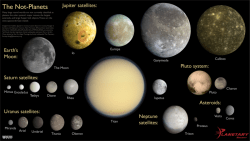
This same process happened on all the large moons in the Solar System.
Because of its smaller mass, our Moon became tidally locked to the Earth billions of years ago. Now the process is continuing to make the Earth tidally locked to the Moon as well.
In the distant distant future, the Moon will stop moving in the sky, and hang motionless, visible from only half the Earth.
How distant? In about 50 billion years, long after the Sun has died, the Earth and the Moon will finally be tidally locked to each other, just like Romeo and Juliet, Fry and Leela, Pluto and Charon. The force of gravity is a powerful thing. Powerful enough to stop a moon in its tracks.
Did you have any other questions about the Moon? Post your suggestions in the comments and we’d be glad to make more videos and dig deeper!
Is Jupiter Our Friend Or Enemy?
Like me, you’re probably a little ego-geocentric about the importance of Earth. It’s where you were born, it’s where you keep all your stuff. It’s even where you’re going to die – I know, I know, not you Elon Musk, you’re going to “retire” on Mars, right after you nuke the snot out of it.
For the rest of us, Earth is the place. But in reality, when it comes to planets, this is somebody else’s racket. This is Jupiter’s Solar System, and we all sleep on its couch.
Jupiter accounts for 75% of the mass of the planets of the Solar System, nearly 318 times more massive than Earth, and isn’t just the name of everyone’s favorite secret princess. It’s the 1.9 × 10^27 kilogram gorilla in the room. Whatever Jupiter wants, Jupiter gets. Jupiter hungry? JUPITER HUNGRY.
What Jupiter apparently wants is to throw our stuff around the Solar System. Thanks to its immense gravity, Jupiter yanks material around in the asteroid belt, preventing the poor space rocks from ever forming up into anything larger than Ceres.
Jupiter gobbles up asteroids, comets, and spacecraft, and hurtles others on wayward trajectories. Who knows how much mayhem and destruction Jupiter has gotten into over the course of its 4.5 billion years in the Solar System.
Some scientists think we owe our existence to Jupiter’s protective gravity. It greedily vacuums up dangerous asteroids and comets in the Solar System.
Other scientists totally disagree and think that Jupiter is a bully, perturbing perfectly safe comets and asteroids into dangerous trajectories and flushing earth’s head in the toilet during recess.
Which is it? Is Jupiter our friend and protector, or evil enemy. We’ve already figured out how to dismantle you Jupiter, don’t make us put our plans into action.
Some of the most dangerous objects in the Solar System are long-period comets. These balls of rock and ice come from the deepest depths of the Oort cloud. Some event nudges these death missiles into trajectories that bring them into the inner Solar System, to shoot past the Sun and maybe, just maybe, smash into a planet and kill 99.99999% of the life on it.
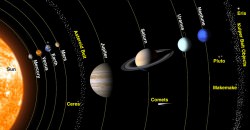
There’s a pretty good chance some of the biggest extinctions in the history of the Earth were caused by impacts by long period comets.
As these comets make their way through the Solar System, they interact with Jupiter’s massive gravity, and get pushed this way and that. As we saw with Comet Shoemaker-Levy, some just get consumed entirely, like a tasty ice-rock sandwich.
The theory goes that Jupiter pushes these dangerous comets out of their murder orbits so they don’t smash into Earth and kill us all.
But a competing theory says that Jupiter actually diverts comets that would have completely missed our planet into deadly, Earth-killing trajectories.
Will the Sailor Scouts provide us any clues? Who can say?
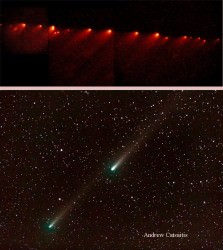
Here’s friend of the show, Dr. Kevin Grazier, a planetary scientist and scientific advisor for many of your favorite sci-fi TV shows and movies.
… [ see video for Interview with Dr. Grazier about Jupiter]
So which is it? Is Jupiter our friend or enemy? We’ll need to run more simulations and figure this out with more accuracy. And until then, it’s probably best if we just tremble in fear and worship Jupiter as a dark and capricious god until the evidence proves otherwise. It’s what Pascal would wager.
What are some other theories you’ve heard about and you’d like us to dig in further? Make some suggestions in the comments below.
Thanks for watching! Click subscribe, never miss an episode.
If you’re into other facts about our Solar system here’s a link to our Solar system playlist. Thanks to Ben Johnson and Tal Ghengis, and the members of the Guide to Space community who keep these shows rolling. Love space science? Want to see episodes before anyone else? Get extras, contests, and shenanigans with Jay, myself and the rest of the team. Get in on the action. Click here.
Is the Universe Dying?
Is our 13.8 billion year old universe actually in its death throes?
Poor Universe, its demise announced right in it’s prime. At only 13.8 billion years old, when you peer across the multiverse it’s barely middle age. And yet, it sadly dwindles here in hospice.
Is it a Galactus infestation? The Unicronabetes? Time to let go, move on and find a new Universe, because this one is all but dead and gone and but a shell of its former self.
The news of imminent demise was recently broadcast in mid 2015. Based on research looking at the light coming from over 200,000 galaxies, they found that the galaxies are putting out half as much light as they were 2 billion years ago. So if our math is right, less light equals more death.
So tell it to me straight, Doctor Spaceman(SPAH-CHEM-AN), how long have we got? Astronomers have known for a long time that the Universe was much more active in the distant past, when everything was closer and denser, and better. Back then, more of it was the primordial hydrogen left over from the Big Bang, supplying galaxies for star formation. Currently, there are only 1 to 3 new stars formed in the Milky Way every year. Which is pretty slow by Milky Way standards.
Not even at the busiest time of star formation, our Sun formed 5 billion years ago. 5 billion years before that, just a short 4 billion after the Big Bang, star formation peaked out. There were 30 times more stars forming then, than we see today.
When stars were formed actually makes a difference. For example, the fact that it took so long for our Sun to form is a good thing. The heavier elements in the Solar System, really anything higher up the periodic table from hydrogen and helium, had to be formed inside other stars. Main sequence stars like our own Sun spew out heavier elements from their solar winds, while supernovae created the heaviest elements in a moment of catastrophic collapse. Astronomers are pretty sure we needed a few generations of stars to build up enough of the heavier elements that life depends on, and probably wouldn’t be here without it.
Even if life did form here on Earth billions of years ago, when the Universe was really cranking, it would wish it was never born. With 30 times as much star formation going on, there would be intense radiation blasting away from all these newly forming stars and their subsequent supernovae detonations. So be glad life formed when it did. Sometimes a little quiet is better.
So, how long has the Universe got? It appears that it’s not going to crash together in the future, it’s just going to keep on expanding, and expanding, forever and ever.
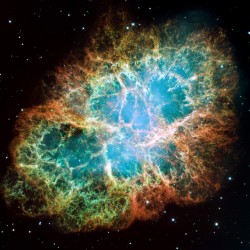
In a few billion years, star formation will be a fraction of what it is today. In a few trillion, only the longest lived, lowest mass red dwarfs will still be pushing out their feeble light. Then, one by one, galaxies will see their last star flicker and fade away into the darkness. Then there’ll only be dead stars and dead planets, cooling down to the background temperature of the Universe as their galaxies accelerate from one another into the expanding void.
Eventually everything will be black holes, or milling about waiting to be trapped in black holes. And these black holes themselves will take an incomprehensible mighty pile of years to evaporate away to nothing.
So yes, our Universe is dying. Just like in a cheery Sartre play, it started dying the moment it began its existence. According to astronomers, the Universe will never truly die. It’ll just reach a distant future when there’s so little usable energy, it’ll be mostly dead. Dead enough? Dead inside.
As Miracle Max knows, mostly dead is still slightly alive. Who knows what future civilizations will figure out in the googol years between then and now.
Too sad? Let’s wildly speculate on futuristic technologies advanced civilizations will use to outlast the heat death of the Universe or flat out cheat death and re-spark it into a whole new cycle of Universal renewal.


